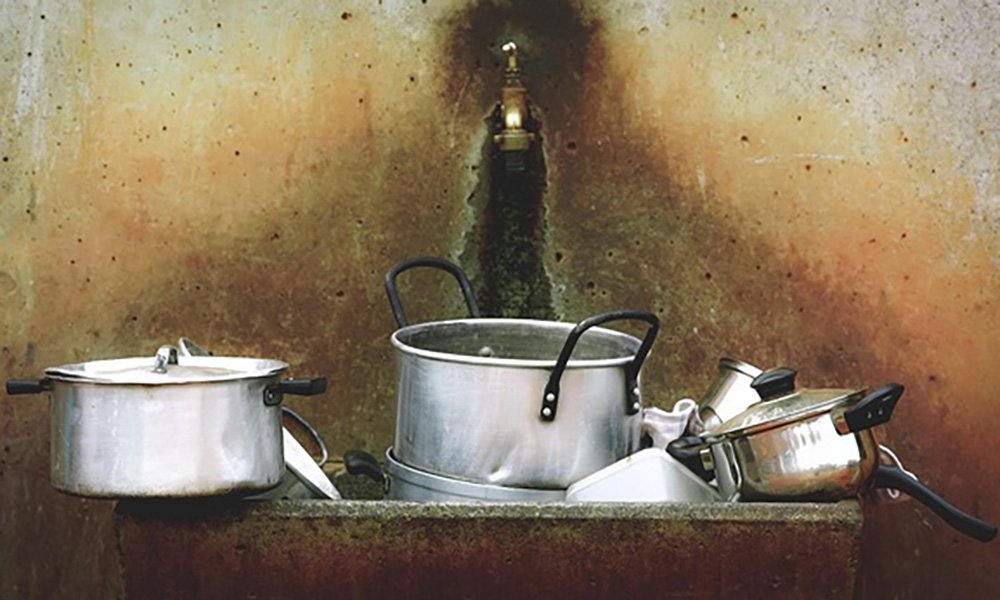Stainless steel is widely known for its durability and resistance to corrosion, making it a popular choice for kitchen appliances, home fixtures, and even outdoor furniture. However, many people wonder: Does stainless steel rust? The short answer is yes, but under specific conditions. In this article, we’ll explore why stainless steel can rust and how to prevent it at home.
What Makes Stainless Steel Rust-Resistant?
Stainless steel is an alloy composed mainly of iron, with added chromium (at least 10.5%) to enhance its corrosion resistance. Chromium reacts with oxygen to form a thin, protective oxide layer that prevents rust from forming. However, if this protective layer is compromised, stainless steel can become susceptible to rust and corrosion.
Factors That Can Cause Stainless Steel to Rust
1.Exposure to Chlorides (Saltwater and Cleaning Agents)
Salt can break down the chromium oxide layer, leading to corrosion.
Household cleaners containing chlorine or bleach can also damage the protective layer.
2.High Humidity and Moisture
Prolonged exposure to moisture, especially in humid environments, can cause stainless steel to corrode over time.
Water spots and mineral deposits can also affect the steel’s surface.
3.Scratches and Damage to the Protective Layer
Physical damage, such as deep scratches or abrasions, can expose the underlying iron, making it vulnerable to rust.
4.Exposure to High Temperatures and Pollution
oExtreme heat and air pollutants can lead to oxidation, especially in outdoor stainless steel structures.
5.Low-Quality Stainless Steel Grades
oNot all stainless steels are created equal. Lower-grade alloys may have less chromium, making them more prone to rust.
Learn more about: Why Stainless Steel is Perfect for Minimalist Décor
How to Prevent Stainless Steel from Rusting at Home
1. Clean Regularly with Mild Soapy Water
•Wipe down surfaces with warm water and a mild detergent.
•Avoid using harsh abrasives that can scratch the steel.
2. Use Stainless Steel Cleaners and Polishers
•Special stainless steel cleaners help maintain the protective chromium layer.
•Apply a stainless steel polish to create an additional protective barrier.
3. Avoid Chlorine and Bleach-Based Cleaners
•Instead, use non-chlorinated cleaners like vinegar or baking soda solutions.
4. Dry Immediately After Cleaning
•Water left on stainless steel can leave stains or cause rust over time.
•Use a microfiber cloth to dry the surface after washing.
5. Protect Stainless Steel in Humid Environments
•If you live near the ocean, regularly wipe down surfaces to remove salt residue.
•Consider using dehumidifiers in enclosed spaces with stainless steel appliances.
6. Remove Rust Spots Immediately
•If you notice rust spots, clean them with a baking soda paste or a vinegar solution.
•Use a soft-bristle brush to scrub gently and reapply a protective polish.
7. Choose the Right Stainless Steel Grade
•For high-exposure areas, use 304 or 316 stainless steel, which offer superior corrosion resistance.
•Avoid lower-grade stainless steel for outdoor or moisture-prone areas.
How to Fix Rust on Stainless Steel
If rust does appear, don’t panic! Here are some easy ways to remove it:
1.Baking Soda and Water
Make a paste with baking soda and water.
Apply to the rusted area, let sit for 10-15 minutes, and scrub gently.
2.White Vinegar Solution
Soak a cloth in white vinegar and apply to the rust.
Rinse and dry thoroughly.
3.Lemon Juice and Salt
Sprinkle salt on the rusted area, then apply lemon juice.
Let sit for a few hours before scrubbing off.
4.Commercial Stainless Steel Rust Removers
Use dedicated rust removers for heavy corrosion.
Always follow the manufacturer’s instructions.
So, does stainless steel rust? The answer is yes, but it can be prevented. By understanding the factors that contribute to rust and following simple maintenance tips, you can keep your stainless steel appliances and fixtures looking pristine for years. Regular cleaning, avoiding harsh chemicals, and protecting the surface will ensure your stainless steel remains in top condition.
Learn more about: 5 Stainless Steel Pendant Lights for a Modern Dining Room
